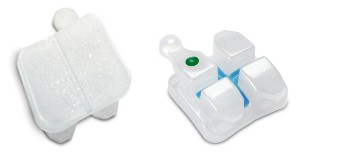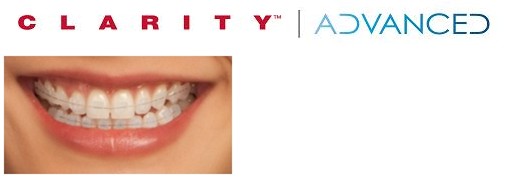In recent years, many orthodontists have seen a dramatic increase in the number of adults interested in orthodontic treatment. Much of this surge is related to an increased awareness and importance placed on cosmetics and dental health. Clear or "invisible" braces have also contributed to this increase in demand.
"Metal Mouth" or "Railroad Tracks" were commonly used phrases to describe those who had braces in the past - especially since it was common to place bands or metal rings around all the teeth, including the front teeth. Recent advances in bonding techniques have permitted the use of braces bonded directly to the teeth, resulting in much less of a metallic looking mouth.
Ceramic braces have improved within the last 10-15 years, providing a more esthetic alternative to the traditional metal braces. Plastic braces and older ceramic braces were prone to staining and changing colors. They also had a greater tendency towards breakage. Ceramic braces are still more prone to fracture than metal, but this has improved significantly in recent years.
The clear braces had an increased risk of damaging enamel upon removal in the past. While this is a risk when removing any bracket (especially from an already weak tooth), manufacturers have changed how the braces are bonded and have provided braces that are easier to remove, which has decreased the risk of enamel damage.
Clear Bracket

Ceramic braces provide an excellent choice for greater esthetics and are less visible on the teeth. However, the following points should be considered. First, clear braces are more prone to breakage and fracture than metal braces. Therefore, even greater care must be taken to avoid hard/sticky foods and activities that may damage the braces. This problem has been reduced in recent years with the development of better and stronger brackets.
Second, ceramic causes more friction with the wire. Some have claimed that this may slow down the treatment time, since friction may slow down the speed of tooth movement. Some clear braces have been manufactured with a metal slot built into the ceramic, purportedly helping to reduce this problem. The actual clinical effect of the friction or of the metal slot may be questionable, and it may not be a significant factor on the time in braces.
Last, and perhaps most importantly, ceramic can wear away enamel if teeth are allowed to contact the brackets when biting. Therefore, ceramic braces on lower teeth may not be recommended in some patients. Placing ceramic braces on upper teeth and metal braces on the lower teeth will reduce the possibility of enamel wear, and generally will not adversely affect the esthetic value of the clear braces (most people do not show their lower teeth very much when they smile).
The increased demand for a better smile and the recent advances in esthetic braces has attracted more adults and patients to consider orthodontic treatment than ever before. Most seem to be concerned about showing too much metal, which makes the ceramic braces a perfect solution. InvisalignTM, which is discussed in a future chapter, is also an alternative option. However, as will be discussed later in more detail, the limitations of the aligners make the clear braces a better choice for some patients.
